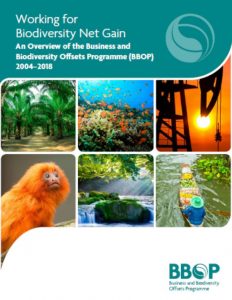Biodiversity is the variety of life on earth. The Convention on Biological Diversity defines “Biological diversity” as the variability among living organisms from all sources including, terrestrial, marine and other aquatic ecosystems and the ecological complexes of which they are part. This includes diversity within species, between species and of ecosystems.
Living organisms perform a host of useful functions, many of which lead to vital ecosystem services that make human life both possible and worth living. These functions and services include purifying the air we breathe, regulating water, creating and stabilizing soil, pollinating crops, protecting us from floods and disasters and helping us adapt to climate change. Biodiversity also gives us food, medicines and countless useful products, and offers us inspiration and opportunities for recreation. But it is under tremendous threat. WWF’s Living Planet Index of 2018 shows an overall decline of 60% in species’ population sizes between 1970 and 2014. There are some particularly dramatic declines within this: Species in the tropics are particularly affected. Species populations in South and Central America have declined by 89% compared to 1970. Freshwater species numbers have declined 83% since 1970. Entire species are going extinct at rates never seen before in human history. (For sources, click here). A groundbreaking global assessment by IPBES in 2019 provides ample evidence of biodiversity loss, its causes and the urgency of addressing them.

The current, unprecedented loss of biodiversity and degradation of land and ecosystem services can have serious consequences, reducing the amount and quality of ecosystem services on which people and businesses depend, destabilising economies, contributing to mass migration and conflict and threatening human health.
A major driver of the decline in species populations and ecosystem integrity is the loss, deterioration, and fragmentation of habitat. This is often linked to development plans with new roads, dams and other large-scale infrastructure, extractive and energy projects, as well as to agricultural expansion. The planting of crops such as palm oil, soybean and cotton and rearing of livestock such as cattle play a dominant part, as do unsustainable and illegal hunting and fishing. Climate change plays an increasing role in biodiversity loss, with particularly devastating effects in the oceans.
To save biodiversity, we need to tackle the root causes of the loss in all these economic activities – and that means setting ambitious biodiversity targets, implementing practical plans to achieve these and following the mitigation hierarchy.

